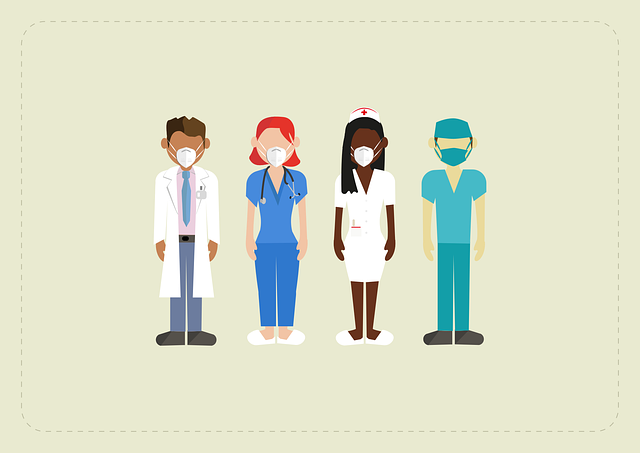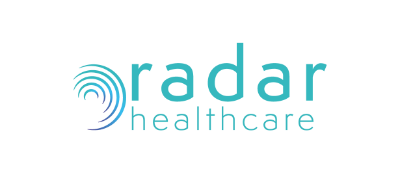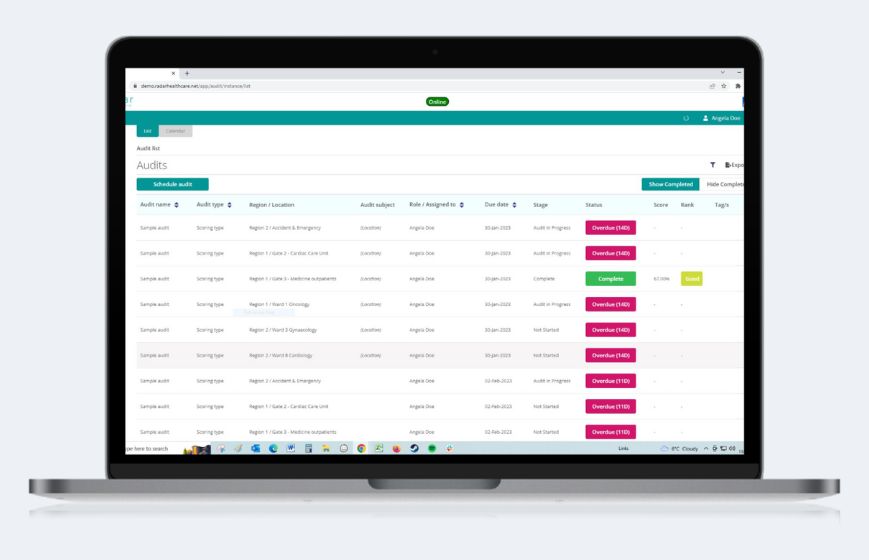Managing staff shortage outcomes across multiple locations – technology is the answer
19 January 2021
Tags:

We understand that right now, managing the outcomes of staff shortages are more important than ever. COVID has enhanced the issue but we know that health and social care organisations are working as hard as possible to keep both their patients and staff safe. Keeping an eye over multiple locations can be tricky – this is where technology comes in.
A recent article by HSJ has reported that more than one in ten hospital nurses are off work in areas hard hit by COVID, and this rate has been rising steadily. It’s important to note that it’s not just hospitals seeing higher than normal absence rates. Technology can help support you to ensure that staff and patient outcomes aren’t affected detrimentally, and with the government announcing £269m for social care staffing and testing, it’s more important than ever.
How technology is the answer
We’ve put together some tips on how to use technology to manage your operational requirements more proactively.
Make use of AI and machine learning
It’s amazing what technology can do nowadays – a phrase we often hear but did you know this also applies to healthcare? Health tech is an amazing thing – and managing patient outcomes with it is no different. Artificial intelligence and machine learning can track trends about what’s happening in the background, things that could be easily missed otherwise. Where there are staff shortages, it can look at arising risks, where areas need urgent support and if there are potential patient safety issues.
Automatic action plans
Alerting you that something isn’t right is just the first step of what your technology should be able to do. It should also be able to let you know what to do next. This is where automated action plans come in – which are triggered when something happens and lets relevant roles in your organisation know what to do and when. These should be flexible to your own processes so you can customise them.
Digitise your processes
Many organisations are still using paper and other manual methods to manage their processes. This is costly in terms of time, as well as the room for human error. All these factors take time away from patient care. By going digital with processes, you can let technology do the work for you and focus on using it to improve quality of care.
Integrate with other systems
It’s not very useful to have a few technologies which don’t communicate with each other, in fact it can be detrimental. It introduces an element of manual work and again the risk of human error when trying to link findings together. Your technology should be able to speak to each other and be interoperable. Even better, choose a technology which offers most areas of what you need, such as quality and risk management.
Enabling a skilled workforce
Your technology should be able to keep track of and show you where each staff member’s training is up to. For example, if one of your locations is short on staff, which staff members in another location are trained in their processes and can go and help? Keep on top of your workforce compliance with a competent software; quickly set up knowledge checks and additional training for staff where required.
Creating one source of truth
Keep clear communications and don’t dilute messages as they’re passed on. With the right technology, you can create a culture in your organisation where it is known as the one source of truth to refer to. This means that any processes and procedures can be updated, and all staff know to refer to the system to find the latest versions.
Malling Health, an organisation of GP practices and Urgent Care and out of hours services, informed staff that their technology was their source of truth for the regularly updated COVID guidance. They knew that if the Director of Nursing and Quality send out a notification, they needed to prioritise it. Read more on how Malling Health used technology as their one source of truth.
Choose Radar Healthcare
If you’re still using manual methods, or if your current technology isn’t capable of these above points, get in touch with our expert team. We can help you get set up at pace, no matter how large your organisation.
How Radar Healthcare have helped customers
With our software, we’ve helped to improve patient outcomes where customers have had staffing issues. Take a look at a couple of examples below:
Walsingham Support
Walsingham Support, a charity which supports adults with learning disabilities and autism, needed to keep track of the number of staff available at each of their locations. It took time to collate this information as they have 89 service managers in England and a further 19 in Wales. This would be done through emailing each service manager every day and waiting for the response, which naturally could take some time! Delays in staff visibility could have led to not enough care in some services and therefore safeguarding issues. They felt that they didn’t fully know the level of staff available each day and that live information would be much more useful – this is where Radar Healthcare came in. Read more on the case study here.
“Radar Healthcare streamlined our process to be responsive and enabled us as an organisation to deliver operations safely and effectively” – Adam Paver-Merrison, Safeguarding and Data Protection Lead at Walsingham Support
London Central & West
LCW are a provider of out of hospital care in London, offering 111 NHS services including GP out of hours. They take pride in their approach for delivering care and improved outcomes to patients in a population of around 3.5 million.
Thanks to Radar Healthcare’s notifications and automatic actions, LCW don’t need to email or chase staff as they can see the status of items that have been issued. GPs are set to benefit by receiving health alerts instantly which provides them with the information to provide the best care.
Being able to digitise and customise their processes on the software, LCW can collect any data needed and filter down to this when required for reporting. It’s making life much easier when it comes to preparing for governance meetings or commissioner feedback; less time consuming and no need to sort through paper and excel sheets to find the evidence needed. This means it’s beneficial for the workforce to run more smoothly. GPs are set to be able to access Radar Healthcare via a single sign on, ensuring the transition between the different software systems they are using is seamless. Read the full case study here.







